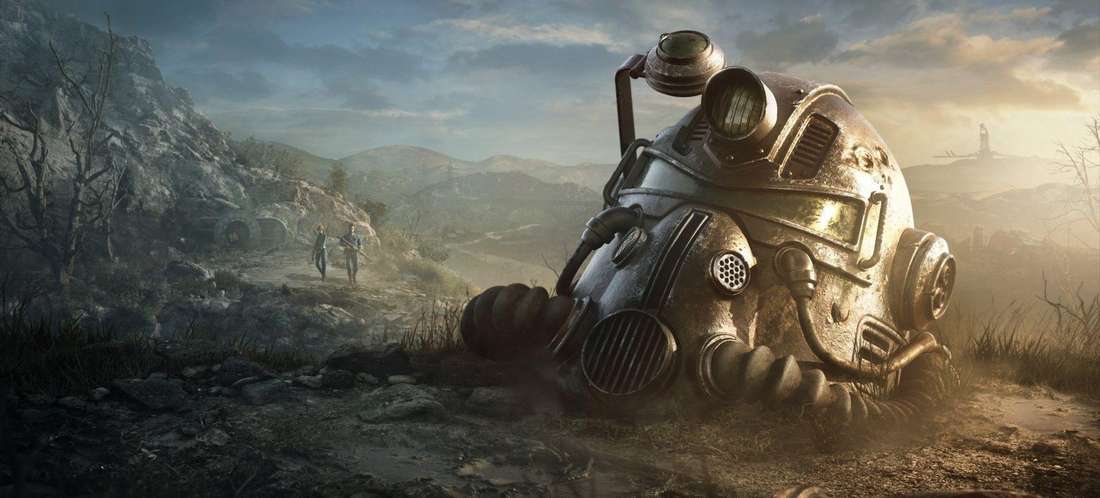Digital Vault Unsealed: Fallout’s Original 3D Vision—A Tech Compromise That Shaped an Iconic RPG Franchise
Popular Now
 Free Fire
Free Fire
 Counter-Strike 2
Counter-Strike 2
 Candy Crush Saga
Candy Crush Saga
 Grand Theft Auto V
Grand Theft Auto V
 Brawl Stars
Brawl Stars
 Roblox
Roblox
 R.E.P.O
R.E.P.O
 FIFA 23
FIFA 23
 Fall Guys
Fall Guys
 Poppy Playtime
Poppy Playtime
 In a fascinating revelation that cuts to the core of video game design history, the original developers of the critically acclaimed Fallout series debated a radically different presentation for the 1997 debut: a fully 3D environment akin to the pioneering action-adventure title, Tomb Raider. This newly surfaced information offers a compelling look at the technological compromises and artistic decisions that ultimately defined one of the most successful role-playing game (RPG) franchises in the industry.
In a fascinating revelation that cuts to the core of video game design history, the original developers of the critically acclaimed Fallout series debated a radically different presentation for the 1997 debut: a fully 3D environment akin to the pioneering action-adventure title, Tomb Raider. This newly surfaced information offers a compelling look at the technological compromises and artistic decisions that ultimately defined one of the most successful role-playing game (RPG) franchises in the industry.
Co-creator Leonard Boyarsky recently confirmed the internal discussions, explaining that the burgeoning 3D technology of the mid-90s, while revolutionary, could not deliver the level of “the amount of detail” the team desired to effectively convey the gritty, post-apocalyptic world. This technical constraint—a stark reminder of the real-world development challenges facing ambitious projects—ultimately led to the decision to pursue the isometric viewpoint, a defining characteristic of the classic Fallout games and a visual style that remains revered by a devoted segment of the gaming community.
 The Detail Deficit: Why Tomb Raider’s 3D Engine Fell Short for a Post-Nuclear RPG
The Detail Deficit: Why Tomb Raider’s 3D Engine Fell Short for a Post-Nuclear RPG
The choice to adopt an isometric perspective for the original Fallout was not born from a lack of vision but a pragmatic assessment of the era’s technical capabilities. The developers needed to present a sprawling, ruined landscape—a wasteland littered with the decaying remnants of a 1950s-styled retro-futurism. To capture this complexity, including intricate environments, detailed character models, and the subtle nuances of a world recovering from nuclear fire, required graphical fidelity that early 3D engines, like those powering Tomb Raider‘s breakthrough success, simply could not render effectively without significant performance trade-offs.
Boyarsky reflected on a key moment in the game: the Vault Dweller’s first emergence from the safety of Vault 13 to see the sun for the first time. The team had to relegate this pivotal, visually dramatic moment to a small text box in the corner of the screen—a narrative necessity born from a visual limitation. This compromise highlights the deep creative tension between narrative ambition and technological reality in AAA game development of that time. The lack of graphical horsepower meant that the emotional and visual impact of the post-war world had to be conveyed primarily through text, atmosphere, and strong writing, rather than immersive visuals.
Bethesda’s Breakthrough: Fallout 3 and the 3D Fulfilment
More than a decade later, when Bethesda Game Studios rebooted the series with Fallout 3 in 2008, the industry’s technological landscape had fundamentally shifted. Utilizing the powerful Gamebryo engine, Bethesda was able to achieve the very vision that eluded the original creators: a fully first-person, open-world 3D experience. This monumental shift not only catapulted the franchise into the modern era of gaming but also allowed for the dramatic, visual presentation of the Wasteland that the Interplay team had only dreamed of.
The transition to a First-Person RPG cemented Fallout 3 as a commercial and critical powerhouse, expanding the series’ appeal far beyond the niche audience of classic isometric RPGs. Bethesda’s rendition of that first step out of the Vault—an intensely visual, full-screen moment—effectively fulfilled the original developers’ long-held design intent. This evolution underscores a crucial theme in Video Game History: the constant race between creative vision and technological advancement.
Key Design Takeaways for Modern RPG Development
The historical debate over Fallout‘s perspective offers invaluable lessons for contemporary game developers, particularly those balancing artistic vision with engine capabilities and budget constraints. The core of the decision-making process revolved around ensuring an uncompromising level of detail and immersion, a factor that still drives high-value game design today.
- Prioritizing Detail: The original team correctly identified that high-resolution isometric art could convey more detail and atmosphere than blocky, low-polygon 3D models of the time. This strategic choice preserved the game’s unique post-apocalyptic aesthetic.
- Scope Management: Acknowledging the limitations of their technology prevented the project from being prematurely scaled into an unsustainable 3D venture. This is a critical lesson in effective Project Management within the Game Industry.
- Narrative Substitution: When visual immersion was impossible, the team leaned into superior writing and dialogue, ensuring a deep, engaging experience—a testament to the power of storytelling in the absence of cutting-edge graphics technology.
The eventual success of the franchise—both the classic isometric titles and the subsequent 3D blockbusters—validates both design philosophies. The original team created a masterpiece within their constraints, and Bethesda realized the full graphical potential when the technology was finally available.
 The Enduring Legacy: Isometric vs. First-Person Viewpoints
The Enduring Legacy: Isometric vs. First-Person Viewpoints
While Fallout 3‘s success solidified the franchise’s modern 3D direction, the debate over the “ideal” viewpoint continues to echo among Fallout fans and classic RPG enthusiasts. Many point to the current resurgence of games like Baldur’s Gate 3, which masterfully blends high-fidelity 3D assets with the strategic, bird’s-eye view of an isometric camera, as proof that the classic style still holds immense commercial and creative potential. This trend suggests that the original Fallout team’s artistic preference was perhaps ahead of its time, only lacking the necessary PC gaming hardware and advanced rendering capabilities to pull it off convincingly in 1997.
The story of Fallout‘s original 3D debate is more than just a piece of trivia; it’s a foundational narrative about the choices that forge enduring franchises. It is a powerful illustration that sometimes, the most celebrated features of a game—like Fallout‘s signature isometric perspective—are born not from a primary design choice, but from a brilliant creative workaround necessitated by the limits of technology. The franchise’s history serves as a high-CPC case study in adaptability in game design.
Further Reading and Future Outlook
The ongoing discussion about Fallout’s artistic direction is likely to continue, especially as the gaming market shows renewed appetite for both open-world 3D epics and deeply strategic, isometric experiences. The question remains: Could a future installment successfully bridge the gap, offering both a fully realized, detailed world and the strategic depth of the original titles? Only time and advancing graphics processing unit (GPU) technology will tell.
We invite our readers to consider the profound implications of this historical crossroads on the Fallout lore and gameplay mechanics.
- Explore: The creative compromises made in other legendary titles of the mid-90s, such as Diablo and StarCraft.
- Analyze: The economic impact of the transition from isometric CRPGs to full-3D open-world RPGs on the global video game economy.
- Debate: Which version of the Vault Dweller’s first step—the text description in Fallout 1 or the visual moment in Fallout 3—had a more powerful emotional impact.
This historical insight reinforces the idea that true innovation often stems from the ingenious navigation of limitations, a fact that secured Fallout’s place as a cornerstone of the modern RPG genre long before it ever went 3D.
We are constantly tracking significant news that shapes the world of gaming and technology. Would you like me to analyze other key design decisions in classic RPGs, such as the initial concepts for The Elder Scrolls or Wasteland?







